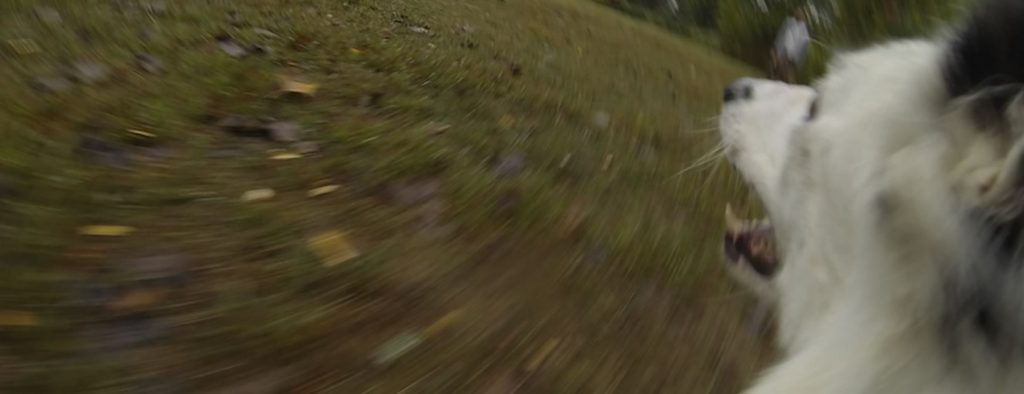
Repeating Rear Cross
The Repeating Rear Cross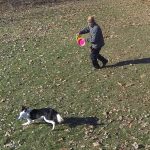 On a Rear Cross, the dog switches Flanks with the behind her. From clock to counter clockwise Flank or vice versa. Taken directly from the canine agility world, the Rear Cross is a... More is a flatwork pattern for training and performance. It allows dog and handler to move around the field as a team connecting on well timed and placed creative throws that end in leaping catches. The Rear Cross
On a Rear Cross, the dog switches Flanks with the behind her. From clock to counter clockwise Flank or vice versa. Taken directly from the canine agility world, the Rear Cross is a... More is a flatwork pattern for training and performance. It allows dog and handler to move around the field as a team connecting on well timed and placed creative throws that end in leaping catches. The Rear Cross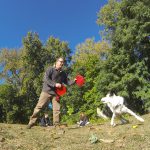 A Cross is an canine agility term that describes a change of working sides. Your dog moves from your left to your right (Heel to Side) or from Clock to Counter. Crosses are... More has the dog changing the working side by turning away from the handler.
A Cross is an canine agility term that describes a change of working sides. Your dog moves from your left to your right (Heel to Side) or from Clock to Counter. Crosses are... More has the dog changing the working side by turning away from the handler.
For Big Leaping
The Repeating Rear Cross is quickly becoming our favorite practical leaping drill here at Pawsitive Vybe. It allows dog and handler a very smooth hook up with highly predictable position and motion which helps to create opportunities for the leaping catch.
Similar to a Zig Zag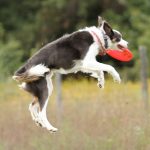 A Zig Zag is a series of catches in smooth succession that forces the dog to move back and forth across the field. Usually performed at a distance of 8-20 yards, the Zig... More, the Repeating Rear Cross has the dog reversing field in front of the handler. The only real difference is that the dog is turning or arcing on the Repeating Rear Cross instead of slamming on the brakes and turning around like in the Zig Zag. The habitual slamming on the brakes, skidding and spinning to a stop with the intent to spring to the next disc can be detrimental to very high drive dogs, as it can take the dog over threshold and pit prey drive against physical ability and self preservation. This softer line can be a huge benefit to dogs who run too hard or are too aggressive in pursuit of the disc, physically, mentally, and in terms of leaping performance.
A Zig Zag is a series of catches in smooth succession that forces the dog to move back and forth across the field. Usually performed at a distance of 8-20 yards, the Zig... More, the Repeating Rear Cross has the dog reversing field in front of the handler. The only real difference is that the dog is turning or arcing on the Repeating Rear Cross instead of slamming on the brakes and turning around like in the Zig Zag. The habitual slamming on the brakes, skidding and spinning to a stop with the intent to spring to the next disc can be detrimental to very high drive dogs, as it can take the dog over threshold and pit prey drive against physical ability and self preservation. This softer line can be a huge benefit to dogs who run too hard or are too aggressive in pursuit of the disc, physically, mentally, and in terms of leaping performance.
How do I do it?
Set up a Working Flank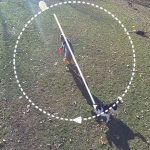 The Working Flank is a moving position. On a Working Flank the dog is out to your side some distance and holds position, moving with you as you move around the field. The... More and cue the Rear Cross. When the dog commits to the move, deliver a disc two to three and a half strides away from the finish of the cross. This will set a line out of the Rear Cross and will help your dog maintain the arcing and turning movement that separates the Rear Cross from the Spin or Twist.
The Working Flank is a moving position. On a Working Flank the dog is out to your side some distance and holds position, moving with you as you move around the field. The... More and cue the Rear Cross. When the dog commits to the move, deliver a disc two to three and a half strides away from the finish of the cross. This will set a line out of the Rear Cross and will help your dog maintain the arcing and turning movement that separates the Rear Cross from the Spin or Twist.
MarkShort for “Positive Marker”, a Mark is a word or signal given at the exact moment a desired behavior is performed. It’s like a clicker. Mark can also mean the act of marking... More the catch, and reinforce the catch with a cued Drop. Mark and reinforce the cued Drop with the Rear Cross cue, which is reinforced with another well placed disc. Experiment and repeat the Repeating Rear Cross using throws intended to make the dog leap and dial in a good pattern that elicits purposeful leaps on discs. Once the pattern is established and leaping becomes a habit, go ahead and add some flashy throws to spice things up.
For Flowing Disc Management
A Repeating Rear Cross can also be used for Disc ManagementDisc Management is a disc dog term that describes management and organization of discs throughout the routine. Disc Management is a scored category in most disc dog freestyle organizations and has great impact... More. The Rear Cross is a great tool for team movement, and team movement moves the dog around the field just as well as a thrown disc, perhaps even better.
Instead of sprinting to another pile of discs on the field when you are out of discs, the traditional disc management solution to a lack of discs on hand, try checking in with your dog, hooking up with the Working Flank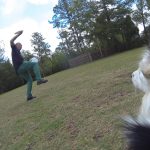 Out to the side of the handler is the Flank. If the dog is out to the handler's right or left the dog is on Flank. If the dog is moving with the... More and Rear Cross and delivering a well planned and executed leaping catch while steadily moving towards a pile of discs. It doesn’t really take any more time and it gives you a good chance to get good a look at the field — take inventory and get your bearings while delivering big performance — it’s a win-win.
Out to the side of the handler is the Flank. If the dog is out to the handler's right or left the dog is on Flank. If the dog is moving with the... More and Rear Cross and delivering a well planned and executed leaping catch while steadily moving towards a pile of discs. It doesn’t really take any more time and it gives you a good chance to get good a look at the field — take inventory and get your bearings while delivering big performance — it’s a win-win.
The Rear Cross affords the handler time and control while maintaining a strong connection to the dog — Time, control, and connection leading to a leaping catch. It’s also quite portable. It can be done on the move or on the run. Use a Repeating Rear Cross to cover ground and get to more discs. It’s hard to find a more commanding and mature way to manage discs than connecting with your dog and throwing leaping catches; well executed, the Repeating Rear Cross creates seamless, elegant, and beautiful disc management.
Working Off the Drop
A big part of this pattern is the ability to leverage all the skills as cookies. At Pawsitive Vybe we aim to turn the cued Drop into a Secondary ReinforcerA Secondary Reinforcer is a conditioned reinforcer that gets it’s value from it’s proximity to a Primary Reinforcer. The “primary reinforcers” in the game of disc are Bite and Chase, and Secondary Reinforcers... More — the cued Drop becomes a cookie. If we create a cookie out of the cued Drop, it makes the Repeating Rear Cross one big Yes-fest!™
Using the cued Drop as a starting point or rally point after a mistake makes for efficient training and frees the team from the inherent pressure of getting the game going or recovering from an error. Marking and reinforcing the cued Drop creates successful links in long disc dog behavior chains. The cued Drop can be leveraged as success and a cookie if attention is drawn to it. Recover and restart training efficiently and without pressure, just cue a Drop.
In order to get started playing, the dog has to have a disc in his mouth. It doesn’t matter how it gets there, just a disc in mouth so you can cue the Drop. If the dog has to have a disc in his mouth to make the game happen, it is likely that he will catch it when you throw it — they are efficient little buggers — and at the very least the dog will go and get it, as that is how the game works.






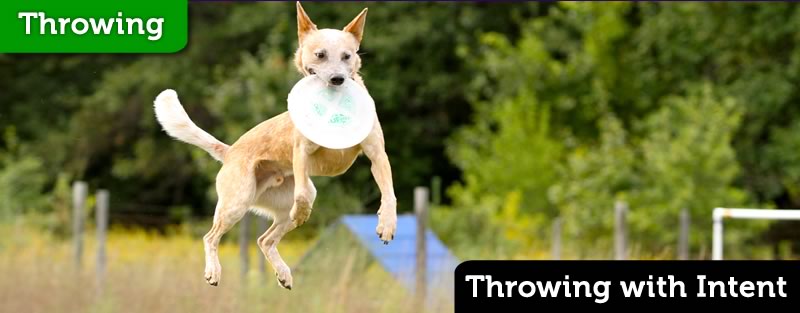
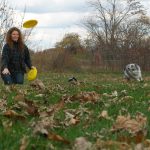

Responses